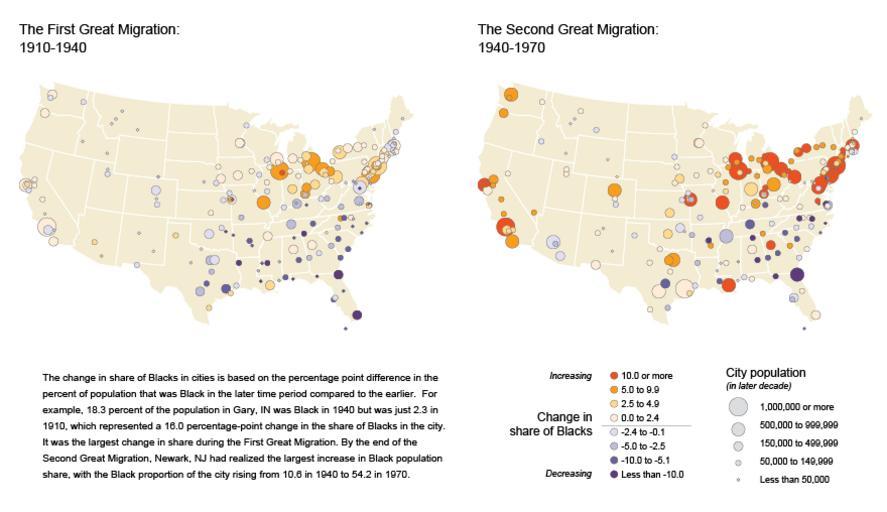MAKE A MEME
View Large Image

| View Original: | GreatMigration1910to1970-UrbanPopulation.png (880x508) | |||
| Download: | Original | Medium | Small | Thumb |
| Courtesy of: | commons.wikimedia.org | More Like This | ||
| Keywords: GreatMigration1910to1970-UrbanPopulation.png en The Great Migration generally refers to the massive internal migration of Blacks from the South to urban centers in other parts of the country Between 1910 and 1970 an estimated 6 million Blacks left the South This graphic compares the early migration 1910-1940 sometimes referred to as the First Great Migration and the later 1940-1970 also known as the Second Great Migration In the early 20th century strict legislation limited immigration into the U S and brought about a shortage of labor in many industrial and manufacturing centers in the Northeast and Midwest These cities became common destinations for Black migrants from the South Cities that experienced substantial changes in racial composition between 1910 and 1940 include Chicago Detroit New York City and Philadelphia During and after WWII Black migrants flooded into many of the cities that were destinations before the war following friends and relatives that had made the journey earlier Poor economic conditions in the Jim Crow South spurred a larger migration flow than was the case in the 1910-to-1940 period and resulted in the creation of large Black population centers in many cities across the Northeast Midwest and West NOTE Data are from decennial censuses 1910 through 1970 Population counts are based on unrevised numbers Data for the Black population for cities in Alaska and Hawaii were not available in 1940 or earlier decades Cities shown are those that were either in the top 100 cities in the country or top 3 of a state and had a Black population of at least 100 people These criteria were placed on 1940 data for the First Great Migration and 1970 data for the Second Great Migration 2012-09-13 US Census Bureau Data Visualization Gallery https //www census gov/dataviz/visualizations/020/ US Census Bureau other versions PD-USGov Uploaded with UploadWizard United States Census Bureau Maps showing African American history United States in the 20th century | ||||